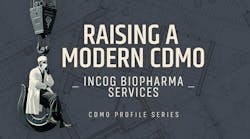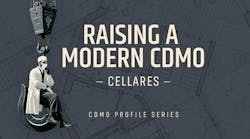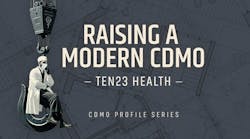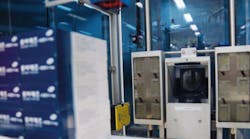As the blockbuster era in pharma comes to a close, so, too, does the idea of corporate loyalty and the thought that a worker will stay with his or her employer for the duration of a career. Drug manufacturers want a fast, flexible workforce, and are turning to contingent labor as a solution. Pharma’s workers, then, must begin to see themselves, says Alan Edwards, VP and product leader for Kelly Services’ science division, as “free agents,” having tremendous value in the marketplace and to more than just one company.
In this interview, Edwards explains the role free agents play and explores the implications for pharma’s workforce.
PhM: How is the life science job market in the U.S. today, as opposed to a year or two ago? What specific changes or trends are you seeing?
A.E.: The downsizing in the life science labor market was unlike any prior recession. This industry restructuring was necessary so that the number of employees would be in line with their cost structures. The majority of the downsized workers obtained employment with contract research and contract manufacturing organizations.
The life sciences workforce is transforming to one where individuals are in charge of their own career working for a company within the pharma supply chain as a contingent worker or “free agent”. Many organizations are embracing this trend as part of their overall workforce strategy. Today, free agents account for more than four of 10 workers employed in the U.S. Research conducted by Kelly Services estimates that the free agent population is at least 20 to 30 percent of the entire global workforce—and growing. Free agents are highly educated, highly skilled, and confident in their abilities.
PhM: Is it safe to say that biopharma is hiring, while traditional (chemical) pharma is still laying off? Are there specific areas where that’s not true?
A.E.: By and large biopharma is growing faster than traditional (chemical) pharma. In the traditional pharma industry, the drugs that are being approved are for smaller subsets of a patient population with a disease. The blockbuster drugs that used to generate large revenues aren’t as prolific.
PhM: What exact positions are manufacturers having the most difficult time finding qualified candidates for these days? What’s to explain this difficulty?
A.E.: The most difficult positions to fill are the bio processing operators and the bio engineering technicians. The reason for the difficulty is the U.S. is not producing enough scientists from our colleges and universities. (Or, is it because not enough students are studying in the science fields?) In addition, the government and trade institutions collaboratively should offer more support to the pharma industry to increase the talent pool.
Another factor making it hard to find qualified candidates is that companies are using traditional recruiting tactics that are effective today. By partnering with a workforce solutions firm, such as Kelly Services, companies map out a recruitment strategy that is suitable for their needs and meet the demands of the new complex workplace.
PhM: Would you say that there is a significant “skills gap” in the life sciences, in terms of what skills workers have and what skill sets manufacturers actually need?
A.E: The life sciences industry’s labor shortage is smaller than the overall skills gap in America. More importantly, there is an unknown hiring gap between the candidate’s expectations of the position and the employer’s job criteria. Millennial recruits desire to be mobile and work from home and baby boomers are staying in the job market longer and are eager to travel to job destinations. Both types of candidates want to work for innovative companies and have meaningful assignments.
Employers need to change their recruiting practices and source the work where the talent is located versus trying to find talent where their company is located. This concept is called “modular deployment.” Utilizing contingent workers is a way for companies to use the workers’ specialized knowledge obtained from previous assignments for their research and development projects.
PhM: Are your clients (i.e., manufacturers) hiring with the idea that new hires may need significant training before they are ready to perform their full responsibilities, or are manufacturers more interested in hiring people who are ready to “hit the ground running”?
A.E.: Employers want to hire people to “hit the ground running” because companies can’t afford to train their new hires. Therefore candidates need to self prepare when starting a new position.
PhM: Are manufacturers still relying heavily upon part-time, contingent workers, or are they more willing to hire full-time positions?
A.E.: Contingent workers are growing 25 times faster than full-time workers.
PhM: Finally, some critics say that life sciences companies are not taking enough responsibility to train the employees they need, and to work with academia and training centers to develop the future workforce. Your thoughts on this?
A.E.: First all I don’t know that academia is the best source of training for manufacturing. Manufacturing is different than research where you can get practical training in academia. However, having proficient technical skills is no longer enough. Candidates must also have soft skills in order to be able to effectively work with co-workers.





